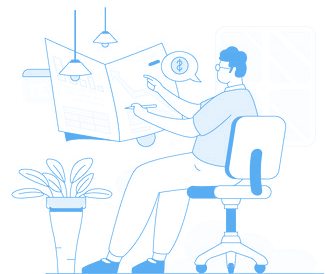Partial Payment Meaning
A partial payment refers to a payment made for a portion of the total amount due, rather than paying the full amount upfront. It’s a flexible arrangement where the payer remits part of the money now and pays the remaining balance later, either in scheduled installments or upon reaching specific milestones.
In HR and payroll contexts, partial payments can occur in several scenarios:
- Salary advances or partial salary disbursements.
- Reimbursements done in parts.
- Freelancers or consultants receiving payments in phases.
- Settlements of final dues after resignation or termination.
Partial payments are often used when:
- The employer wants to retain cash flow flexibility.
- The project or work is completed in stages.
- The total payable amount is significant and spread over time.
- Both parties agree to phased payouts in the contract.
From a legal and financial standpoint, a partial payment still contributes toward settling the total amount owed, and both parties must have clear documentation to avoid disputes.
Benefits of Partial Payments
The partial payment method offers a variety of advantages for both employers and employees, particularly in dynamic business environments where agility is important. Here are the key benefits:
1. Improved Cash Flow Management
One of the biggest advantages for organizations is that partial payments reduce the pressure of large lump-sum payouts. This allows companies to manage their cash reserves more effectively, especially during periods of limited liquidity or operational uncertainty.
2. Increased Flexibility
Partial payments provide financial flexibility to both parties. For employers, it becomes easier to schedule payments based on milestones or performance. For employees or vendors, it assures them of regular income instead of waiting for the full amount at once.
3. Better Financial Planning
Receiving funds in smaller installments helps employees and contractors manage their personal finances more efficiently. It also enables the employer to track budgets and adjust projections more accurately.
4. Encourages Long-Term Collaborations
Offering partial payments for ongoing work like consulting, freelancing, or project-based contracts can foster stronger professional relationships. Regular payments help maintain trust and motivate the service provider to continue delivering high-quality work.
5. Risk Mitigation
For employers, releasing payments in stages minimizes the risk of paying for incomplete or unsatisfactory work. On the flip side, employees or vendors are less likely to experience long payment delays since they are compensated periodically.
6. Legal and Contractual Clarity
When partial payments are agreed upon and documented clearly in contracts, they set realistic expectations for both parties. This reduces the risk of disputes or misunderstandings later in the engagement.
How to Create an Invoice for a Partial Payment?
Creating an invoice for a partial payment requires clarity, accuracy, and proper documentation. Whether you're issuing the invoice or processing it as part of your HR or payroll duties, here’s a step-by-step guide:
Step 1: Specify the Invoice Type
Clearly label the invoice as a “Partial Payment Invoice” at the top. This alerts the recipient that this is not the final amount due.
Step 2: Include Complete Billing Details
Mention both the payer’s and payee’s details:
- Name and address
- Contact information
- Tax identification numbers, if applicable
Step 3: Reference the Original Invoice or Contract
Include the original invoice number or contract agreement that outlines the total amount due. This provides context for the partial amount being paid.
For example:
“This invoice is for 40% of the total payment agreed under Contract #456 dated March 5, 2025.”
Step 4: Break Down the Payment Structure
Mention the:
- Total amount due
- Amount already paid (if applicable)
- Current partial payment amount
- Remaining balance after this payment
Here’s a sample format:
| Description | Amount (₹) |
|---|---|
| Total Invoice Value | ₹50,000 |
| This Partial Payment | ₹20,000 |
| Remaining Balance | ₹30,000 |
Step 5: Add Due Dates and Milestones
Clearly state the due date for the current partial payment and any future milestones for remaining payments. This creates accountability on both sides.
Step 6: Mention Mode of Payment
Specify how the partial payment should be made—whether via bank transfer, UPI, cheque, etc. Including bank details or a QR code for digital payments is helpful.
Step 7: Include Legal and Tax Disclosures
If applicable, include:
- GST or VAT details
- TDS (Tax Deducted at Source)
- Any applicable terms and conditions
- Penalties for delayed payments
Step 8: Keep a Record
Always maintain records of partial payment invoices and receipts. Attach any signed agreements or communication that supports the partial payment arrangement.

 Back to Glossary
Back to Glossary